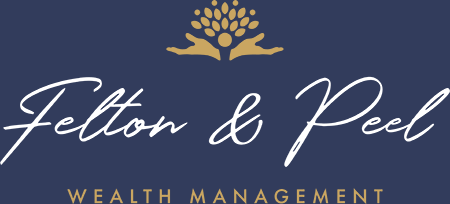
Understanding Risk Management in Personal Finance
Risk is one of the most pervasive themes we encounter in our lives. Whether we’re looking to avoid the risk of legal action in business, reduce the exposure of loss from a transaction, or protect an asset, Vice Chairman of IBM Gary Cohn’s quote still rings true:
“If you don’t invest in risk management, it doesn’t matter what business you’re in; it’s a risky business.”
Corporate giants, regulatory bodies, the public sector, and international conglomerates are all taking a seat at the Risk Management table as well, as the global risk management industry is expected to reach $28.87 billion by 2027. Perhaps these stakeholders are hoping that $29B worth of prevention equates to a little bit more than a pound of cure.
What Is Risk Management?
Risk management is the process of identifying, assessing, and controlling risks to your personal or professional well-being (or the well-being of an organization). These risks include legal, strategic, financial, and security threats and can originate from a wide variety of sources, such as legal liabilities, poor strategic decision-making, accidents, natural disasters, and financial uncertainty.
Fortunately, there are tried and true techniques that individuals and businesses can employ to mitigate these risks. Those strategies are avoidance, retention, sharing, transferring, and loss prevention.
- Avoidance is when you do not participate in a risky activity in its entirety. For example, risk-averse investors may not participate in the stock market during high periods of market volatility.
- Retention and acceptance means acknowledging that a certain risk is unavoidable — and accepting the consequences. For instance, someone who lives next door to a baseball field buys all the necessary insurance on their home, but baseballs are constantly breaking their windows. Because the average cost to fix the window is much lower than the deductible, they are comfortable accepting this risk.
- Sharing is when you partner with a company or individual to share in mitigating the risk. In theory, the more people who share in the risk, the more the cost to hedge against the risk should shrink. A great example of this is how employers and employees share in the cost of employee benefits.
- Transferring is when an individual shifts the burden of risk to an insurance company. This strategy is the foundation of life insurance, as the insured transfers the risk of passing away prematurely to an insurance company.
- Loss prevention and reduction is when you attempt to minimize the risk through education or preventive measures versus completely eliminating the risk. For instance, you might take defensive driving courses to become a safer, less accident-prone driver (and keep premiums low) or get an annual mammogram to safeguard against cancer.
When individuals are trying to figure out which risk management strategy works best for them, cost is often the driving factor. But you should also consider risk appetite and risk tolerance as they play a foundational role in proper risk management.
Applications of Risk Management
While there are a myriad of ways to safeguard against unwanted risks, let’s focus on a few different real-world strategies that will help you protect your financial assets and income.
Investment-Related Risk Management
In times of high inflation, like what we are experiencing now, inflation-adjusted market investments such as Treasury Inflation-Protected Securities (TIPS), floating-rate bonds, or a high-yield savings account can help protect your cash on hand from depreciating. Likewise, inflation-protected assets, such as income-producing property or inelastic commodities like gold or crude oil, can help protect your dollars from losing value greater than the inflation rate during a moderate- to high-inflationary environment.
Other forms of investment-related risk management are hedging and building a diversified portfolio. Hedging can be enacted through the writing of covered calls or puts to protect gains or minimize losses. Building a diversified portfolio that is uncorrelated through asset allocation will aid in minimizing volatility, which in return can minimize losses, too.
Health-Related Risk Management
According to a study from the Department of Health and Human Services, about 70% of Americans who reach age 65 will need some long-term care during their remaining years, and almost half receive some type of paid care in their lifetimes.
Long-term care insurance can fill in the gaps and provide a risk transfer opportunity in case you are ever unable to perform two of the six basic daily living activities. Some life insurance and annuity riders (policy-add ons) may also provide similar benefits to a long-term care policy.
Income-Related Risk Management
While most people may not consider themselves an asset, our ability to earn income is our greatest asset. Maintaining disability income insurance can act as a hedge against lost income in the case of a short- or long-term period in which you are not able to work. Insurance policies can replace up to 60% of your income in most cases, while premiums will cost you around 1% to 3% of your annual salary. You can use proceeds from the policy to maintain your family’s standard of living until you are able to work again.
Despite the perceived benefit of disability income insurance, a LIMRA study found that only a mere 14% of the population holds coverage. Half said they would face financial hardship within six months of a disability.
Ready to Talk About Risk Management?
Understanding risk management is a key aspect of building a strong investment portfolio that works for you. Having an experienced and knowledgeable financial advisor by your side can also be a game-changer for your investment strategy.
Our advisors at Felton & Peel Wealth Management are here to help you leverage risk management while building an investment portfolio. Schedule a consultation with us today to get started.







